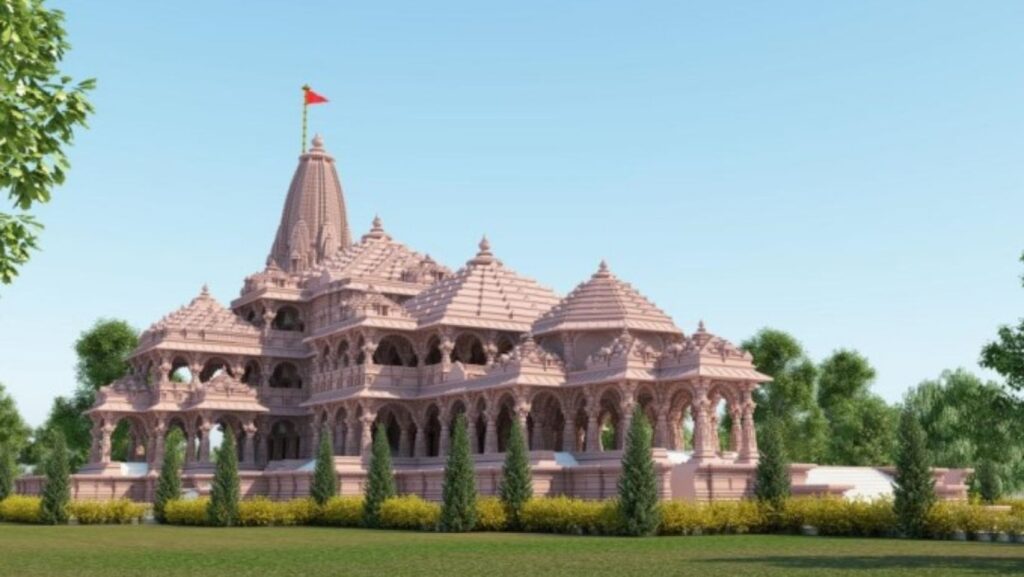In the heart of India, the Ayodhya Ram Mandir stands as an embodiment of faith, culture, and centuries of anticipation. The expectations surrounding Ayodhya Ram Mandir have been etched in the collective consciousness of millions. However, as this monumental structure finally takes shape, the stark contrast between the envisioned grandeur and the reality on the ground becomes evident. In this exploration, we delve into the intricate tapestry of Ayodhya Ram Mandir, navigating the realms of belief and architecture, and examining how it compares to the dreams that have nurtured the soul of a nation.
The Historical Context: Ayodhya, renowned as the hallowed birthplace of Lord Ram, has remained a pivotal nexus of religious and political tensions over an extended period. The contentious Babri Masjid-Ram Janmabhoomi dispute culminated in 2019, marked by the Supreme Court of India’s landmark ruling in favor of erecting a grand Ram Mandir. This pivotal judgment laid the foundation for the ongoing narrative that unfolds before us.
Expectations – A Grand Vision: The anticipation surrounding the Ayodhya Ram Mandir is nothing short of monumental. From the moment the first brick was laid, expectations soared. The commitment was to construct not merely a temple but a representation of unwavering belief, solidarity, and an architectural masterpiece. The goal was to establish a sacred sanctuary that would endure through the ages, a manifestation of Lord Ram’s enduring heritage.
The Architectural Marvel: The temple’s blueprints are truly breathtaking. Featuring soaring spires, meticulously detailed engravings, and an expansive grounds, it pledges to stand as a tribute to India’s abundant architectural legacy. Highly skilled artisans and craftsmen hailing from various corners of the nation have gathered in Ayodhya to lend their craftsmanship to this colossal endeavor. The elaborate stone carvings, evoking the spirit of bygone Indian temple design, are poised to transport guests on a mesmerizing journey through the annals of history.
The Religious and Cultural Significance: The Ayodhya Ram Mandir holds immense religious and cultural significance for Hindus worldwide, as it is universally recognized as the sacred birthplace of Lord Ram, a highly venerated deity renowned for embodying the principles of dharma (duty) and righteousness. Designed to be a central hub for spiritual and cultural activities, the temple is positioned to function as a haven where devout individuals can discover solace and pursue enlightenment.
The Reality – Progress and Challenges: While the expectations surrounding the Ayodhya Ram Mandir are lofty, the reality of its construction is a complex and challenging endeavor. The project’s progress has faced numerous hurdles, from logistical challenges to the ongoing COVID-19 pandemic. Financing such an ambitious project, entirely through donations, has also proven to be a formidable task.
Also read – Who will be the chief priest of Ayodhya’s Ram temple, announced
Also read – Explore Ayodhya Deepotsav 2023 and Feel the Beauty
Timeline Delays: At first, there were optimistic expectations that the temple would be finished by 2023, aligning with the conclusion of Prime Minister Narendra Modi’s second term. Nevertheless, due to the complex intricacies of the temple’s architectural design and unexpected interruptions stemming from the global pandemic, the projected timeline has been extended. The revised completion date remains uncertain.
The Funding Conundrum: The Ayodhya Ram Mandir’s development hinges entirely on contributions from devoted individuals and those who hold the temple dear. Despite the remarkable surge of backing, the financial dimension continues to pose a formidable hurdle. Upholding absolute transparency in the management of finances and ensuring that the temple’s construction adheres to the most rigorous standards have been of utmost importance.
Architectural Challenges: Building a temple of this scale and significance is a task that requires meticulous planning and execution. The architectural intricacies, including the carving of thousands of stone blocks, present unique challenges. Ensuring the structural stability and longevity of the temple is of utmost importance.
A Symbol of Unity or Division? The Ayodhya Ram Mandir project sparks debates and conversations on a global scale, offering the potential to symbolize unity and religious harmony, yet simultaneously prompting concerns about potential societal divisions. Striking the right balance between celebrating a cherished faith and fostering inter-community understanding remains a challenge.
Conclusion – A Monumental Journey: In the realm of Ayodhya Ram Mandir, reality has delicately weaved itself into the fabric of expectations. As the sacred structure stands tall today, it embodies the culmination of a profound faith, bridging the chasm between anticipation and actuality. While hopes were steeped in architectural grandeur, the temple emerges as a symbol of unity, honoring a centuries-old longing. In the end, Ayodhya Ram Mandir teaches us that the reality of devotion surpasses the grandest of expectations, underscoring the enduring power of faith in shaping our world.
Also read – Explore Bandhe Ke Balaji Temple, Ajmer Road, Jaipur
